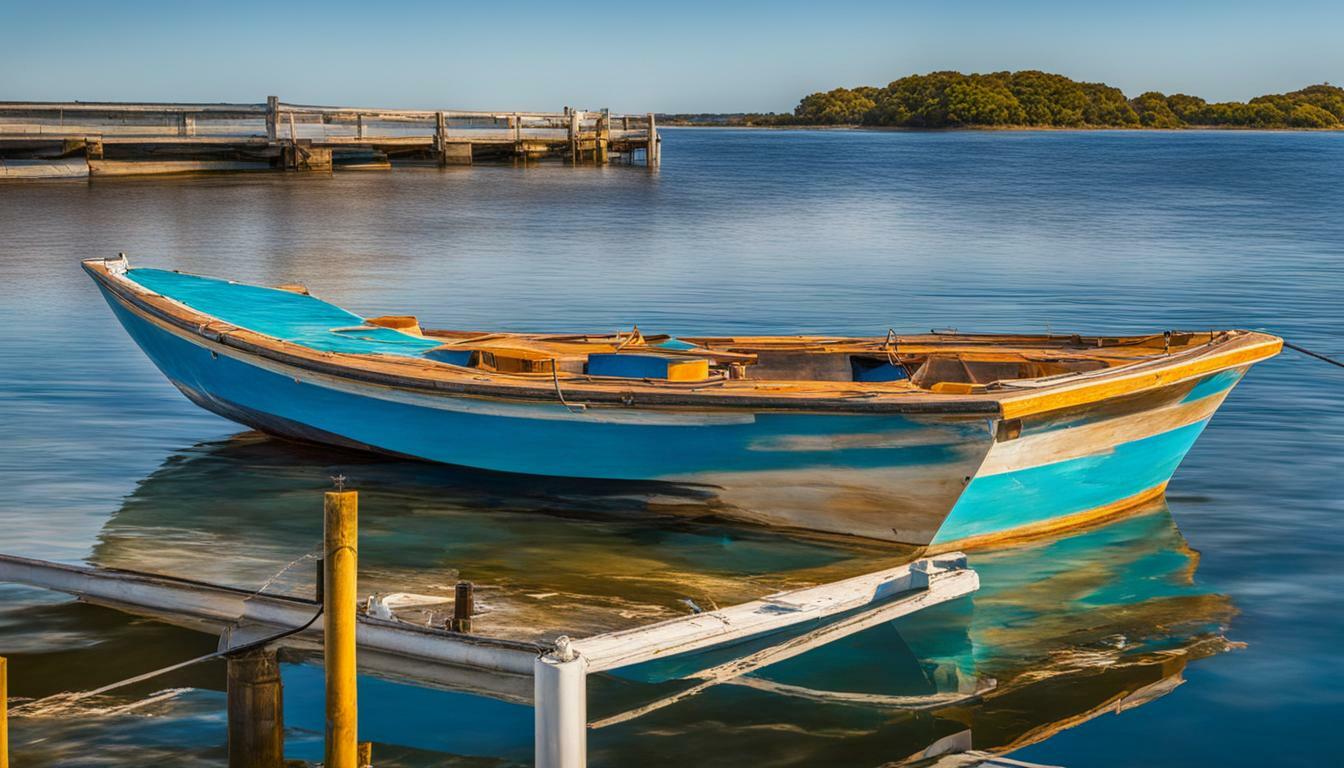Mastering the art of painting a boat on canvas can be a rewarding experience for any artist. Whether you are a seasoned painter or just starting out, capturing the beauty and essence of a boat can result in a stunning masterpiece. In this article, we will explore the steps to painting a boat on canvas and provide some tips and tricks to help you paint like a pro.
Key Takeaways:
- Choosing the right canvas size and texture is important for painting a boat on canvas.
- Sketching out your boat on canvas before painting can help you plan out the composition of your painting.
- Consider the surroundings of the boat when choosing colors for your boat painting.
- Using a combination of light and dark colors can create depth and dimension in your boat painting.
- Letting the painting dry completely before adding highlights and shadows is important for a professional finish.
- Acrylic paint is a popular choice for painting a boat on canvas due to its quick-drying and good coverage properties.
- Experimenting with different brush sizes, colors, and textures can help you develop your own unique style and create stunning boat paintings.
Choosing the Right Canvas for Your Boat Painting
Mastering the art of painting a boat on canvas can be a rewarding experience for any artist. Whether you are a seasoned painter or just starting out, capturing the beauty and essence of a boat can result in a stunning masterpiece. However, before you begin painting, it is important to choose the right canvas for your artwork.
The size and texture of the canvas are important factors to consider. For larger boats, you will want to select a larger canvas, while a smaller boat may only require a smaller canvas. Additionally, the texture of the canvas can create interesting effects. A rougher texture can add depth and dimension to the painting, while a smoother canvas will provide a more polished look.
It is also important to prime your canvas before painting. This will ensure that the paint adheres properly and does not absorb into the canvas. While you can paint a boat on a colored canvas, keep in mind that the color of the canvas will affect the final colors of your painting.
When choosing a canvas for your boat painting, consider the size and texture of the canvas, as well as the need for priming. By selecting the right canvas, you can lay the foundation for a beautiful and successful painting.
Sketching Out Your Boat on Canvas
Before you begin painting, it is important to sketch out your boat on the canvas. This will help you plan out the composition of your painting and ensure that everything is in the right place. You can use a pencil or charcoal to sketch out the boat and any other elements you want to include in your painting.
Sketching is an essential part of the boat painting process. It allows you to experiment with different layouts and compositions before committing to paint. This can save you time and frustration in the long run and help you create a stunning masterpiece.
Choosing Colors for Your Boat Painting
When it comes to choosing colors for your boat painting, it is important to consider the surroundings of the boat. The colors you choose can help to create a sense of atmosphere and set the tone for the entire painting. Consider where the boat is located – in the ocean, on a lake, or in a harbor – and use colors that reflect the surroundings.
For example, if the boat is in the ocean, using blues and greens can create a sense of water. On the other hand, if the boat is in a harbor, incorporating grays and browns can represent the dock and other boats. Think about the overall mood and atmosphere you want to convey in your painting. Do you want to create a sense of calm and tranquility, or do you want to convey a sense of excitement and energy?
When selecting colors for painting a boat on canvas, keep in mind that the colors you see in nature are often more muted than what you might expect. While you want to use colors that are true to the surroundings, you don’t want to go too bright or bold, or the painting may look unrealistic. Instead, choose colors that are slightly toned down and more natural-looking.
Remember, the colors you choose should complement one another and work together to create a cohesive whole. Consider the color wheel and choose colors that are harmonious, such as blues and greens, or complementary, such as blues and oranges.
By taking the time to carefully choose your colors, you can create a stunning boat painting that captures the beauty and essence of the sea and the boats that sail on it.
Painting the Background and Boat
Once you have sketched out your boat and chosen your colors, it is time to start painting. Begin by filling in the background with the chosen colors to establish the setting of the boat. This is where you can let your creativity shine by incorporating interesting textures and hues to convey the mood and atmosphere of the painting.
Next, move on to the boat itself. Use a combination of light and dark colors to create depth and dimension. Start with the larger areas and work your way towards the smaller details, such as the sails, ropes, and other elements that will bring your boat to life. Pay attention to the direction of light and shadow to ensure that the painting looks realistic.
One technique to keep in mind when painting a boat is to use a dry brush technique. This involves using a paintbrush containing very little paint to create a textured effect. This can be especially effective when painting waves or adding texture to the boat’s hull.
Remember that painting a boat on canvas is a process that requires patience and attention to detail. Take breaks often to step back and view your work from a distance to ensure that the composition is balanced and the colors are working well together.
Once you are satisfied with the painting, let it dry completely before adding any finishing touches. This will ensure that the painting does not smudge or smear when adding highlights, shadows, and other details.
In the next section, we will discuss the importance of adding finishing touches to your boat painting.
Adding Finishing Touches to Your Boat Painting
After you have finished painting your boat on canvas, it is important to let it dry completely before adding any finishing touches. This may take anywhere from a few hours to a few days, depending on the thickness of the paint and the humidity in the room. Rushing this process could cause the paint to smudge or crack, ruining your hard work.
Once the painting is completely dry, you can begin adding highlights and shadows to enhance the realism and depth of the artwork. Use a lighter shade of the base color to add highlights to areas that would naturally catch the light. Conversely, use a darker shade to add shadows to areas that would be in shadow.
When adding finishing touches, it is important to use a light touch and work slowly. Remember, it is always easier to add more paint than to remove it. Start with a small amount of paint and build up as needed.
Finally, applying a varnish or sealant will protect the painting and give it a professional finish. A varnish will also intensify the colors and enhance the overall appearance of the painting. It is important to select a varnish that is compatible with acrylic paint and specifically designed for use on paintings.
Materials for Painting a Boat on Canvas
In terms of materials, acrylic paint is a popular choice for painting a boat on canvas. This type of paint dries quickly and provides good coverage, making it ideal for use on canvas. It is also water-resistant, which is an important factor when painting a boat.
When choosing a canvas for your boat painting, it is important to consider the size and texture of the canvas. A rougher texture can create interesting effects, while a smoother canvas will provide a more polished look. Additionally, priming your canvas before painting is vital to ensure that the paint adheres properly and does not absorb into the canvas.
Along with paint and canvas, it is important to have the right equipment. Paintbrushes and palette knives are both useful tools for painting a boat on canvas. Paintbrushes offer more control, while palette knives can create interesting textures and effects. Experimenting with different brush sizes, colors, and textures can help you develop your own unique style and create stunning boat paintings.
Time and Tools for Painting a Boat on Canvas
The time it takes to paint a boat on canvas will vary depending on the size and complexity of the painting. A smaller, simpler painting may only take a few hours to complete, while a larger, more intricate painting could take several days or even weeks. It is important to set aside enough time for your painting and not rush the process, as this can lead to mistakes and unsatisfactory results.
When it comes to tools, a variety of paintbrushes and palette knives can be used for painting a boat on canvas. Different brush sizes and shapes will create different effects, while palette knives can be used to add texture and dimension to the painting. Experimenting with different tools and techniques can help you develop your own unique style and create stunning boat paintings.
Conclusion
In conclusion, painting a boat on canvas is a rewarding endeavor that allows artists to capture the beauty of the sea and the boats that sail on it. By following the steps outlined in this article and experimenting with different techniques, artists can master the art of painting a boat like a pro. Whether you are a seasoned painter or just starting out, painting a boat on canvas can result in a stunning masterpiece that will be a beautiful addition to any home or office.
Remember to choose the right canvas size and texture, sketch out your boat before beginning to paint, and consider the colors that will best convey the mood and atmosphere of your painting. As you paint, focus on creating depth and dimension with a combination of light and dark colors, paying attention to the details that will bring your boat to life.
Let your painting dry completely before adding any finishing touches such as highlights and shadows, and consider applying a varnish or sealant for a professional finish. Use acrylic paint and prime your canvas before beginning to paint, and experiment with different brush sizes, colors, and textures to develop your own unique style.
With practice and patience, anyone can learn to paint a boat on canvas, regardless of their level of experience. So grab your canvas, brushes, and paints, and let your creativity set sail!
FAQ
Q: What size and texture of canvas should I choose for painting a boat?
A: For larger boats, choose a larger canvas, while a smaller boat may only require a smaller canvas. The texture of the canvas can also create interesting effects, with a rougher texture adding depth and dimension, while a smoother canvas provides a more polished look.
Q: Should I sketch out the boat on the canvas before painting?
A: Yes, it is important to sketch out your boat and any other elements you want to include in your painting before you start painting. This helps you plan the composition and ensure everything is in the right place.
Q: How do I choose the right colors for my boat painting?
A: Consider the surroundings of the boat, such as the ocean or a harbor, and use colors that represent the mood and atmosphere you want to convey. Blues and greens work well for water, while grays and browns can represent docks and other boats.
Q: What is the process for painting the boat on canvas?
A: Start by filling in the background with the chosen colors to establish the setting. Then, move on to the boat itself, using a combination of light and dark colors to create depth. Pay attention to the details to bring the boat to life, such as sails and ropes.
Q: How long does it take to paint a boat on canvas?
A: The time it takes depends on the size and complexity of the painting. It could take anywhere from a few hours to several days. With practice and patience, anyone can learn to paint a boat on canvas.
Q: What materials do I need for painting a boat on canvas?
A: Acrylic paint is a popular choice as it dries quickly and provides good coverage. It is also important to prime your canvas before painting. Additionally, you will need paintbrushes or palette knives for applying the paint.
Q: What tools can I use for painting a boat on canvas?
A: Both paintbrushes and palette knives can be used. Paintbrushes offer more control, while palette knives create interesting textures and effects. Experimenting with different tools can help you develop your own unique style.



